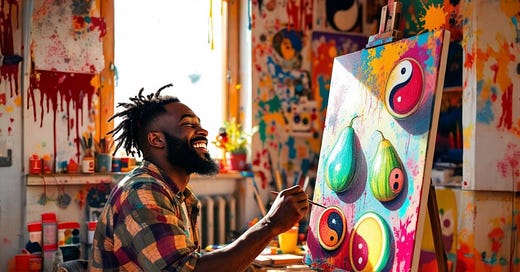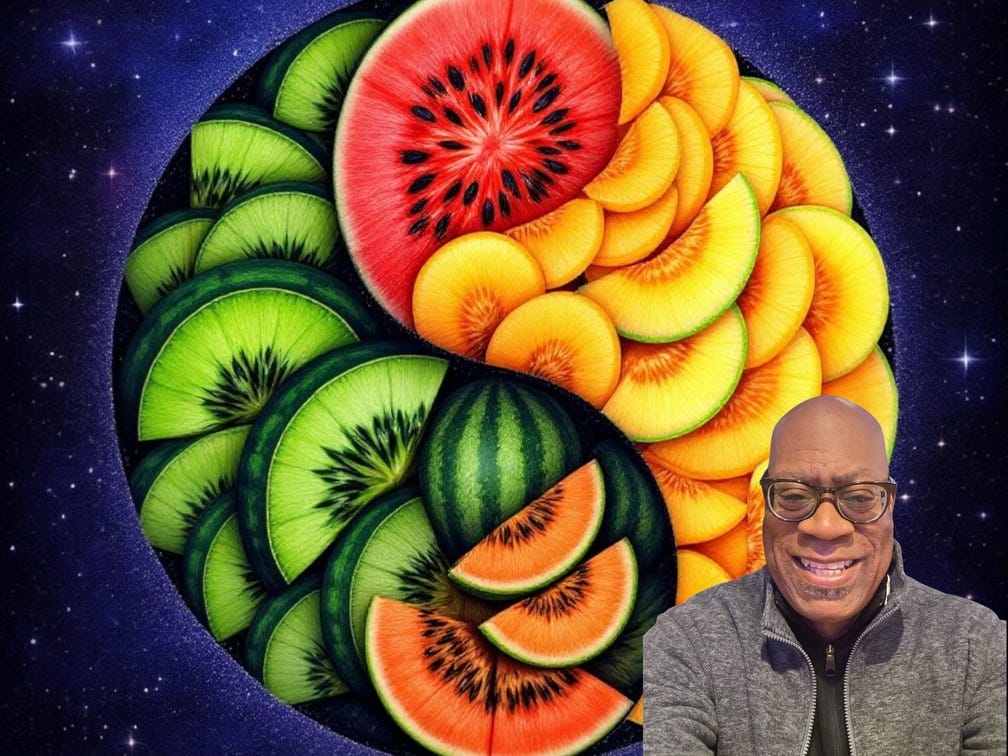There’s something exquisitely subversive about Shi Tao, aka the “Bitter Melon Monk,” a renegade painter-monk who turned the art world of 17th-century China on its head.
Born Zhu Ruoji in 1642, Shi Tao wasn’t just a painter; he was a rebel spirit wielding a brush as a weapon against conformity. His life, steeped in both the sweetness and bitterness of exile, loss, and enlightenment, reads like a manual for the restless souls of today, especially those of us devoted to expansion, freedom, and connection in a world cracking under the weight of rigidity.
Shi Tao emerged during the early Qing dynasty, a time when China’s artistic scene was dominated by strict orthodoxy. Painters were bound to copy the masters of the past, shackled to formulas like prisoners in silk robes.
But Shi Tao refused to play along. His philosophy centered on what he called the “single brushstroke,” or the “primordial line”—the unrepeatable, irreducible gesture that birthed all creation. That one stroke contained chaos, clarity, and a radical kind of freedom. It was his way of rejecting mere technical mastery in favor of something wilder and more alive…..
……Personal Truth
Expansion
For Shi Tao, expansion wasn’t just about growth. It was about breaking past walls, deconstructing the very marrow of being. He painted landscapes not as static backdrops but as living, breathing organisms. His brush pulsed with movement, surprise, and experimentation. Empty space in his paintings wasn't absent; it signified a possibility—a cosmic invitation to wander through the unknown.
In the times we’re living through now marked by surveillance, algorithmic predictability, and the numbing repetition of digital life, Shi Tao’s art hits like a thunderclap. He reminds us to smash through the surface, to move beyond narrow boxes of identity, productivity, or even “success,” and dare to touch something raw and uncontained. Expansion, in his universe, isn’t about accumulating more, it’s about dissolving the edges of the self.
Freedom
Shi Tao’s very name—“Bitter Melon Monk”—carries the paradox of freedom through discipline. Bitter melon is a fruit prized in Chinese medicine for its sharp, cleansing taste. It’s no accident Shi Tao adopted this as his monastic name. It speaks to a life acquainted with sorrow, exile, and the stripping away of illusion. Yet within this bitter austerity, he carved out freedom.
His brush defied convention. His lines leapt, broke, meandered. His colors startled. He painted as if answering only to the Tao, the spontaneous unfolding of life itself.
For those of us chafing under modern pressures, whether the capitalist grind, social media gyrations, or the exhausting cult of optimization, Shi Tao’s example is electric. Freedom isn’t about escape; it’s about dancing within limits, finding the wild current inside the cage.
Connection
Despite his fierce individualism, Shi Tao wasn’t some isolated genius painting alone in a mountain hut. His work invites connection—not just between artist and viewer, but between heaven and earth, form and emptiness, spirit and matter. Chan Buddhism shaped his vision; his paintings hum with the sense of oneness beneath multiplicity.
In a time when disconnection of the political, ecological, and psychological variety has become our dominant crisis, Shi Tao’s art offers medicine. His brush becomes a bridge, not a barrier. He reminds us that connection isn’t about clinging or conformity; it’s about presence. The primordial line he cherished is the line that stitches us to each other and to the cosmos. It’s the line that says, “you are here, I am here, and this moment between us matters.”
The Bitter Gift for Now.
What I personally take from Shi Tao’s journey is this: the bitter moments, the heartbreaks, the betrayals, the failures are not detours from the path. They are the path. Shi Tao’s bitter melon was not some ornamental badge of suffering; it was the fierce, cleansing flavor that allowed him to taste life whole.
In times like ours, when anxiety and despair are practically ambient noise, his example challenges us to embrace, not bypass, the bitterness, and transmute it into art, love, and presence.
Shi Tao didn’t just paint; he threw down a gauntlet. He dared to live unscripted, to trust the messy singularity of his own gesture. He calls us to be artists—not necessarily with ink or brush, but with our lives. To risk the single brushstroke. To risk expansion, freedom, connection—not as hashtags or slogans, but as embodied, trembling practices.
And here’s the kicker: he didn’t need a movement, a brand, or a viral platform to change the world. He just needed the courage to pick up the brush and move from his deepest truth.
So as we navigate a time of collapse and emergence, Shi Tao’s bitter, brilliant example whispers to us to let go of the script. Make your mark. Trust the primordial line that only you can draw. That’s how we paint a future worth inhabiting.
If the Daily Chocolate Taoist nomadic wisdom lights up your day, fuels your mind, or gives you a fresh perspective, I’d love your support as a paid member!
Or, if you’re feeling generous, drop a little (or a lot) of dirty chai latte love my way—every bit helps keep this Taoist journey flowing.
I’m committed to delivering high-quality, thought-provoking features straight to your inbox—no paywalls, no fluff, just raw, unfiltered wisdom on what it means to be human in today’s paradoxical, mysterious, and uncertain world.
Your support fuels my full-time mission, and I appreciate every single contribution. Let’s keep this energy going!
Diamond Michael Scott
aka The Chocolate Taoist






A brilliant connection across time and distance to another world I would not likely have experienced. Thank you su muych!
Another useful aspect of this post: I don't at all deny that Shi Tao's works are radical or revolutionary, but what I see, upon casual research, is: Chinese Art. If I had a hundred images, say ten from ten different artists of the period and region, it is possible that Shi Tao's works would be distinctive and I would group them all together, but I am not confident that I would do so. In just such a way, there was something approaching civil war in the Byzantine Empire over, allegedly, some subtle differences (subtle to me, anyway) of theology. How many of our current conflicts are like that?